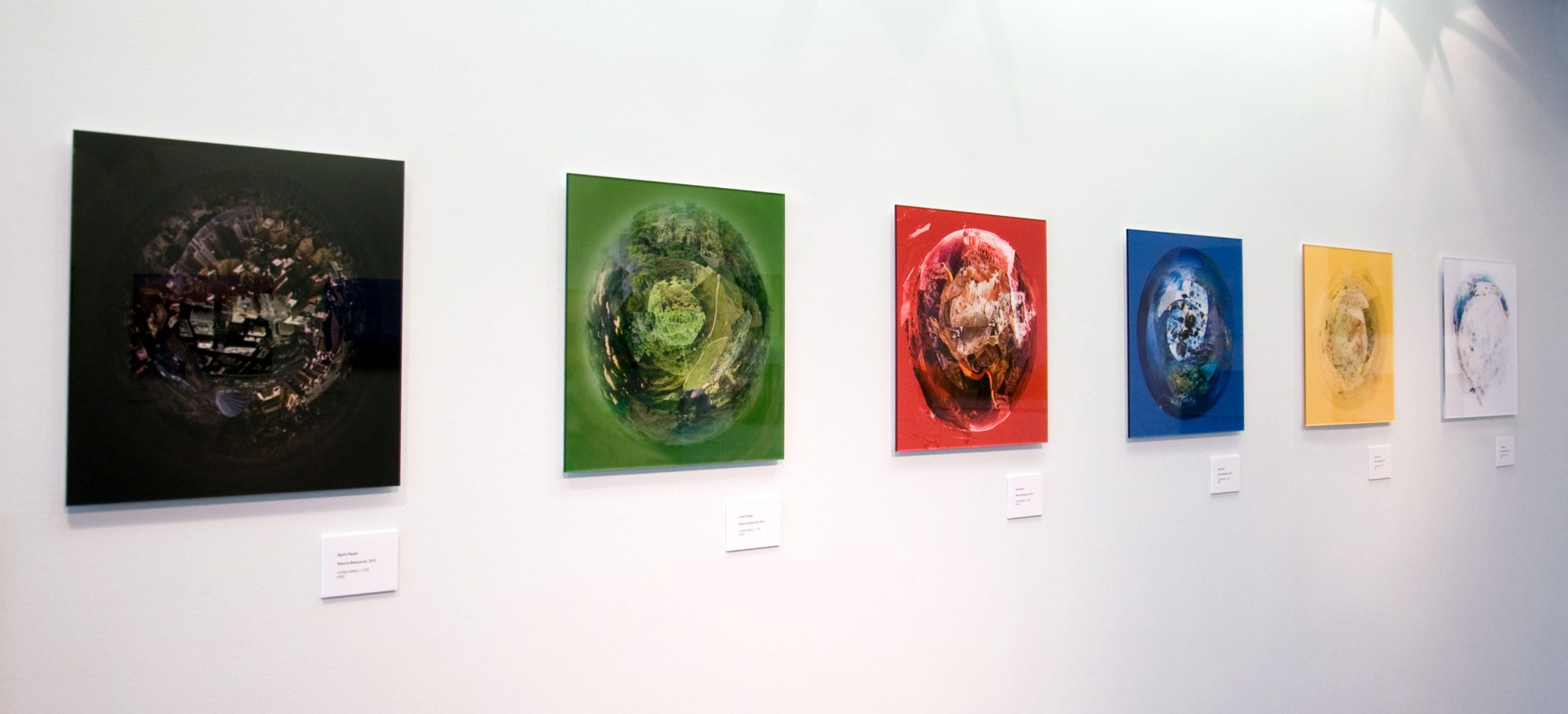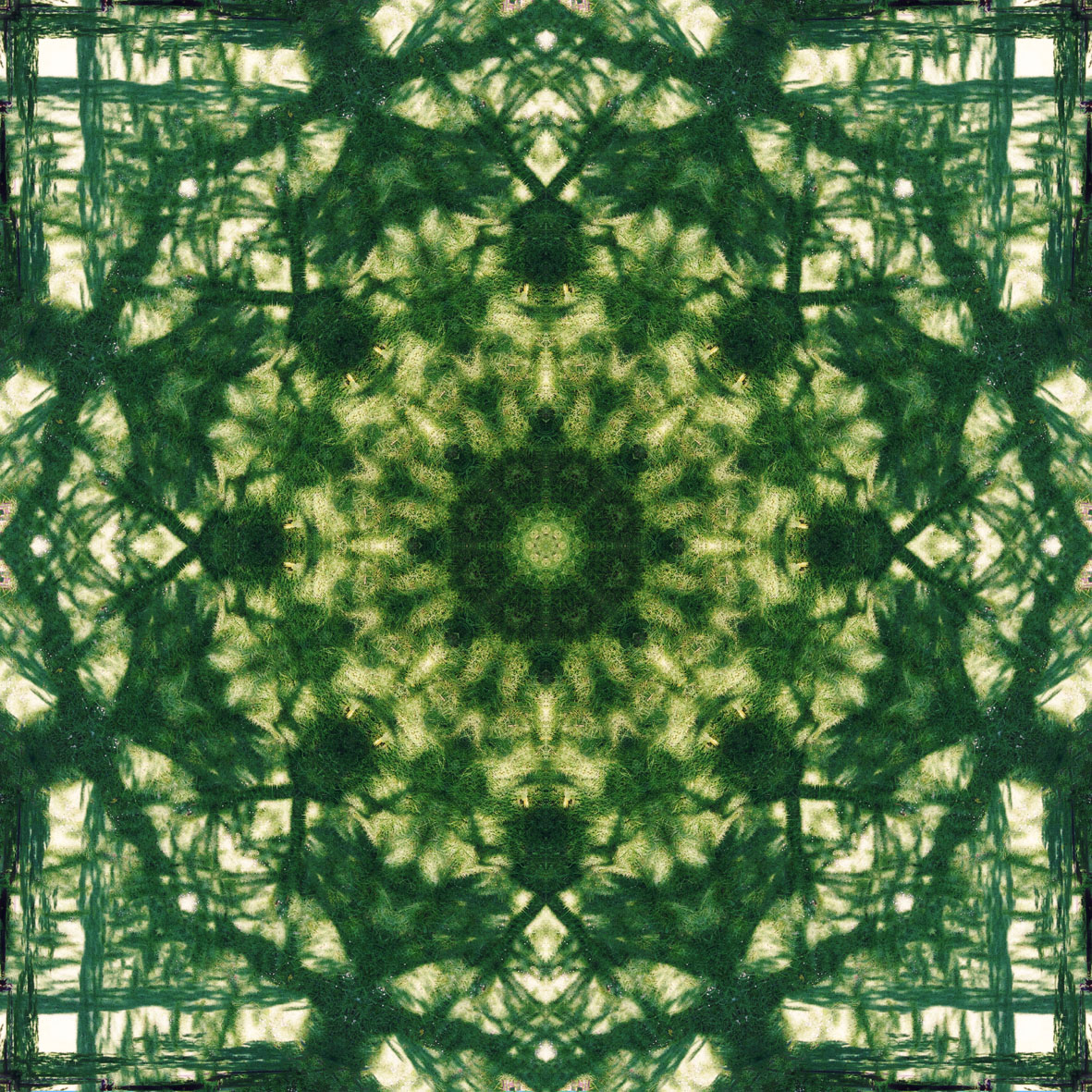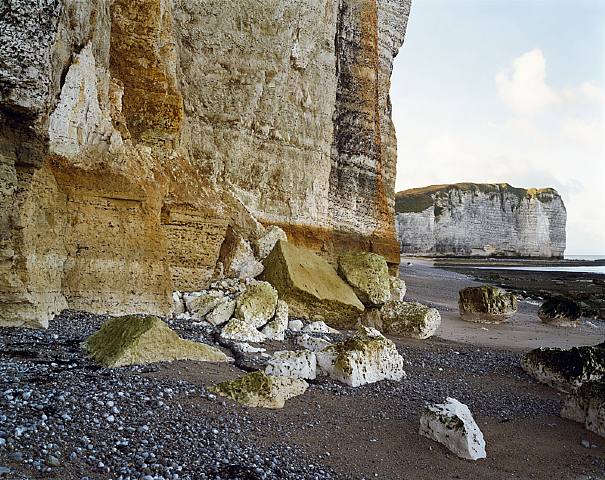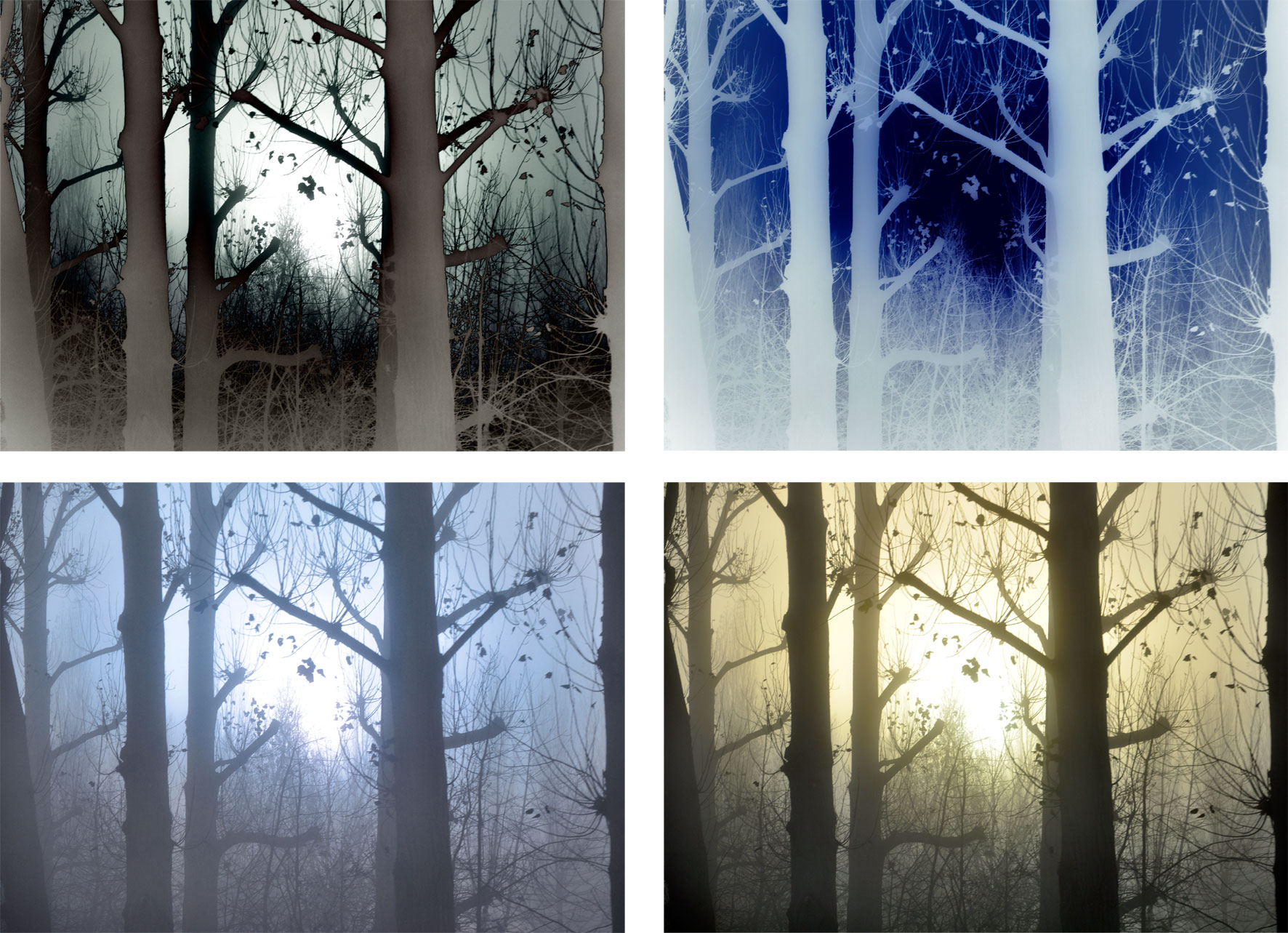NOTEBOOK SPOTLIGHT: 6 Days of Uncreation
The text that follows is an edited version of a presentation of my first year’s doctoral research, in which I discussed my photographic series 6 Days of Uncreation.
This series of composite photography builds a fracturing picture of global habitats, earth as humankind has found and used it. It is also a visual reading of the narrative perspectives in Genesis 1-3. For Christian doctrine, these chapters are foundational for the understanding of humanity and nature as created, ordered and purposeful. Though held by some groups as a factual account of the world’s origins, they are more credibly understood as “theological statements about historical events which are described in a non-literal form”.[1] The uniqueness of the Hebrew, as compared to other ancient Near Eastern accounts, is a focus on the historicized element of human involvement and agency (in contrast to “the mythological realm of transcendent realities”[2]), leading to an understanding of continuing creation as biblical theme and theological trope.
In 6 Days of Uncreation, I begin by employing the suggestion of an all-encompassing, aerial perspective to precisely question photography’s veracity in terms of how we view the world. In some ways, the aerial photograph is a concise form of the claim to objective truth that is paramount in photographic depiction: it elevates the detached observer and makes of the scene a separate and containable framed map.[3] In the early examples of balloonist Eduard Spelterini, one critic notes the superlative authority subtly inferred from a photograph of Rome: “With the press of a button, the balloonist and photographer demonstrated that it was easy to elevate oneself with technical means far over the spiritual power embodied in St Peter’s”.[4] Yet the power of the elevated viewpoint also simultaneously makes of the world a surface – a pressing into flatness – that can have the effect of abstraction and dissolution of the landscape.
With my globes, I further aim at something that holds these tensions together, and in doing so, I hope to come closer to a visual reading of the narrative of creation. Robert Alter, in describing the attribution of these chapters to two different sources, known as P and J,[5] is keen to show how two different worldviews can be deliberately employed (in this case by the editor of the original texts) to present a more rounded and holistic one. The formal stanzas in chapter 1 to 2:4a tell of a creation rhythmically ordered by phraseology and repetition, ascribing to God and creation a vertical orientation characterized by both the spatial divisions of matter and life, and the predominance of God as speaker whose voice creates and divides: it is “a tightly symmetrical envelope structure”.[6]
The second section however (from 2: 4b onwards) tells of creation as man experiences it, at the level of encounter and immediate, material geography. It is humanity working on the land, speaking over the animals, and seeing it: a horizontal spectrum of involvement.[7] These two perspectives are part of the biblical vision of creation:
The world is orderly, coherent, beautifully patterned, and at the same time it is a shifting tangle of resources and topography, both a mainstay and a baffling challenge to man.[8]
Such perspectives are what I draw on for my series of globes: on the one hand, the world is described by separated spheres of habitats seen from above, and on the other hand, it is a composite of texture and layers seen at the level of its surface. Aerial views of New York’s Manhattan or the Grand Canyon are merged with views of Barcelona or Dartmoor horizons. I have written elsewhere about this conflation of views within a spherical composition: “the effect of vertigo is one where the nominal order present in a photograph has been destabilised, presenting instead something infinite which we are implicated in”.[9]
On a broad level, this theme is taken up by natural theology. For the purposes of this reflection we may ask more specifically how the art image does so with regard to the seen and created world. George Pattison, in his book ‘Art, Modernity and Faith’, takes us on a journey that reclaims the material world (including man-made culture) for a God-infused worldview, drawing in turn on Thomas Aquinas, Jacques Maritain, John Ruskin and Paul Tillich. He says:
There is an unsurpassable meaning and value to be found in the pursuit of those desires which draw us towards the world, and which enable or inspire us to affirm the goodness of that world in which we find ourselves. It should be clear by now that I regard art has having its unique place in the economy of human life precisely among such desires: arising from them, shaped by them and revealing them. … For art anticipates… the messianic kingdom itself, the return of the world to that created fullness in which we may declare, with God, that it is all ‘very good’. In this way the activity of art, and of all good looking, proclaims that our desire towards the world is neither wasted nor futile. This desire rises from the eye of the flesh and sees in what it sees the presence of a good creation and the beginning of a more perfect consummation.>[10]
Seeing is here part of the creation narrative, in that it acts to re-form and re-invest the world with meaning – specifically what Pattison here calls a “return” to created fullness, and elsewhere a “redemption in terms of a total transformation of our relation to nature, to the visible, material world and to our carnal, bodily involvement in the world – rather than in terms of deliverance from that world”.[11]
Here, my work is also deliberately suggestive in representing worlds shown in what could be moments of destruction as well as (or instead of) moments of creation. For another significant reading of the Genesis text is the moment of the Fall – the perspectives described by Alter do not result in a harmonious vision of the world, Eden is not perfect for long. The good seeing, both of God and man, become thwarted when Eve gives in to visual temptation – it is precisely this passage that, in Blocher’s analysis, is revealed as the peak of literary symmetry in the J section (by virtue of a series of parallel passages) at chapter 3: 6-8:
When the woman saw that the fruit of the tree was good for food and pleasing to the eye, and also desirable for gaining wisdom, she took some and ate it. She also gave some to her husband, who was with her, and he ate it. Then the eyes of both of them were opened, and they realised that they were naked; so they sewed fig leaves together and made coverings for themselves. Then the man and his wife heard the sound of the Lord God as he was walking in the garden in the cool of the day, and they hid from the Lord God among the trees of the garden.[12]
This strikes me as key to the dark subtext in visuality that seeing is fractured and eclipsed by desire and idolatry, that images are deceitful and illusory, that a covering and a hiding are the inevitable result of having eyes opened to knowledge. While we may yet read creation as a story of redemption (with Pattison and through later biblical themes of eschatological re-creation[13]), it is through a lens where our own making of, and controlling of the earth is symptomatic of blindness. The suggestion in the title of my series is that ‘uncreation’, seen as the misuse and abuse of the world’s resources, is also a moment of suspended sight where it is the viewer that is undone by the very constructs he/she projects onto the world for harmony.
[1] Henri Blocher, In the Beginning: The Opening Chapters of Genesis (Leicester: Inter-Varsity Press, 1984), from the back page.
[2] Osborn, L H (contributor), New Dictionary of Biblical Theology (Nottingham: Inter-Varsity Press, 2000), p.430.
[3] An intriguing study of the British aspect of this collation and collection of images can be found in Kitty Hauser, Shadow Sites: Photography, Archaeology, and the British Landscape 1927-1955 (Oxford: Oxford University Press, 2007). Indicative of sentiment at the time, such photography is closely linked with a sense of national identity and personal connection to the land.
[4] Anton Holzer (contributor) in Hilar Stadler (ed.), Eduard Spelterini and the Spectacle of Images: The Coloured Slides of the Pioneer Balloonist (Zurich: Scheidegger & Spiess, 2010), p.131.
[5] P – the Priestly document, and J – the Yahwistic document.
[6] Robert Alter, The Art of Biblical Narrative (New York: Basic Books, 1981), p.143.
[7] Alter notes the different Hebrew words attributed to acts of creation: P’s ‘to make’ and ‘to create’, compared with J’s ‘fashioning’ (p.145).
[8] Alter, p.147.
[9] Sheona Beaumont, Bristol Through the Lens: An Exhibition and An Essay (Bristol: Tangent Books, 2011), p.12. I go on to mention David Hockney’s suggestion that inverting a photograph’s linear perspective results in a plenitude of infinity, which becomes a specifically theological issue relating to situation and self. See David Hockney, Hockney on ‘Art’: Conversations with Paul Joyce (London: Little, Brown, 2002), p.104.
[10] George Pattison, Art, Modernity and Faith: Towards a Theology of Art (London: MacMillan, 1991), p.153.
[11] Pattison, p.175.
[12] Blocher, pp.27-30. He footnotes Jerome T. Walsh and Umberto Cassuto for their references to this symmetry, in (respectively) “Genesis 2.4b – 3.24: a synchronic approach,” Journal of Biblical Literature 96 (1977), pp.161-177, and Cassuto, A Commentary on the Book of Genesis, Part 1: From Adam to Noah, Genesis I – VI 8 (Jerusalem: The Magnes Press, Hebrew University, 1961), p.94.
[13] See Isaiah 43:19 and Revelation 21:5. John’s vision in Revelation suggests that all will be renewed – the earth and humanity are God’s canvas for creation, nature and culture in all their diversity are headed towards resurrection perfection, not just replacement. See also my piece ‘See, I am making all things new’, 2010, commissioned for Trinity College Bristol.
Header image: 6 Days of Uncreation, 2012, by Sheona Beaumont.



